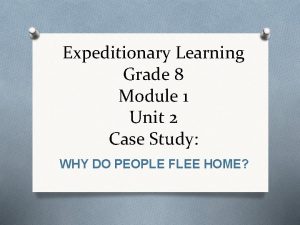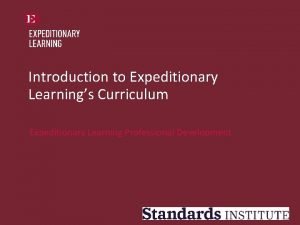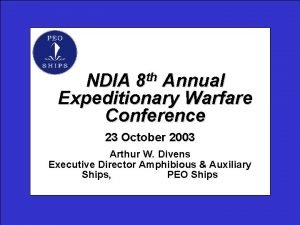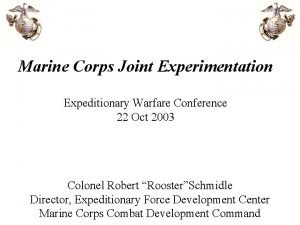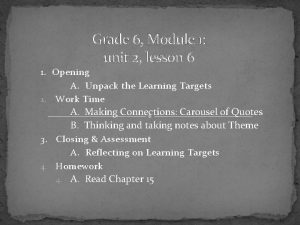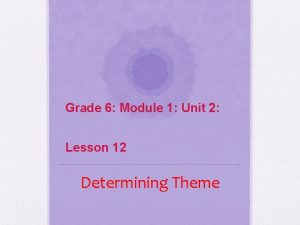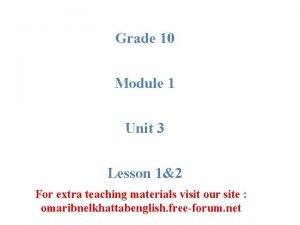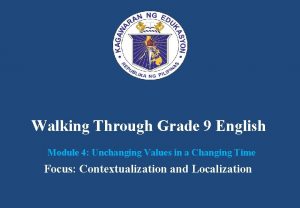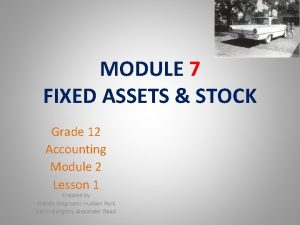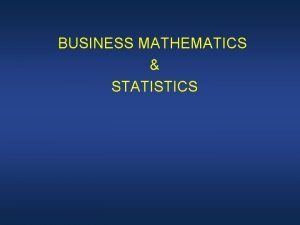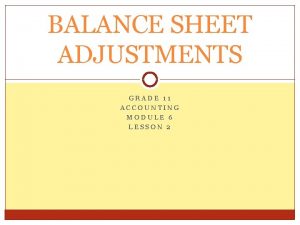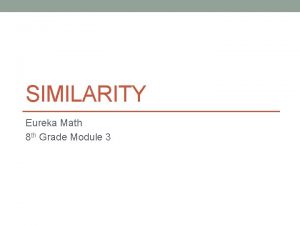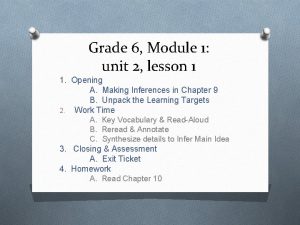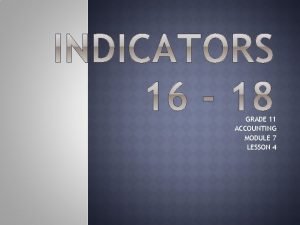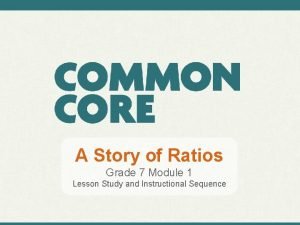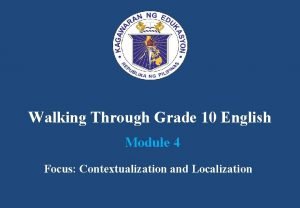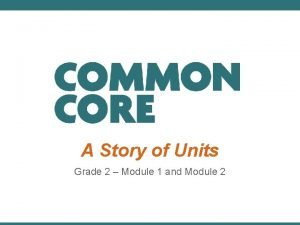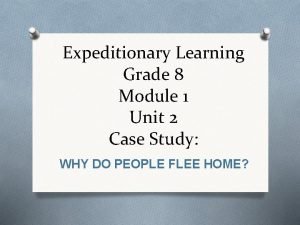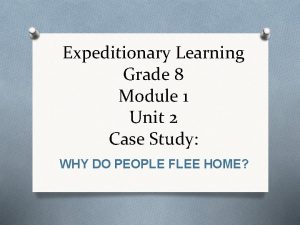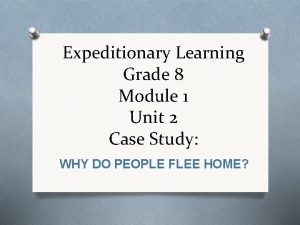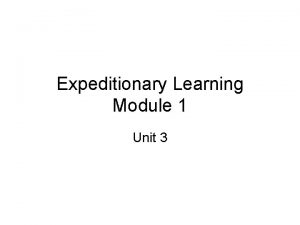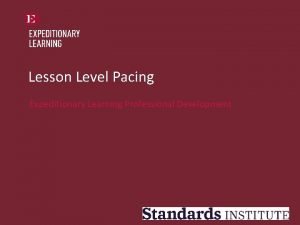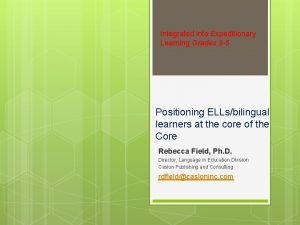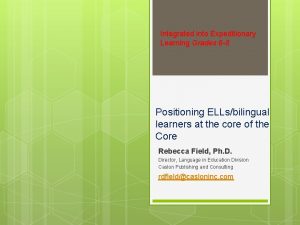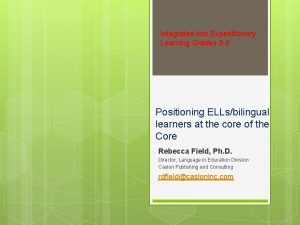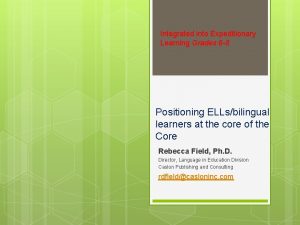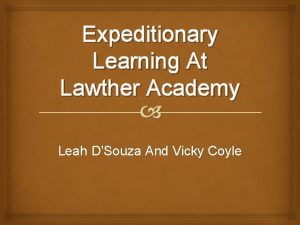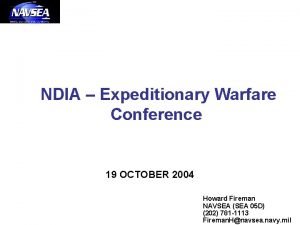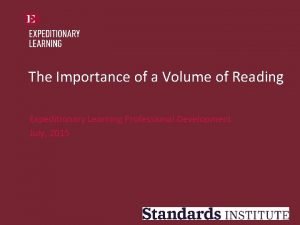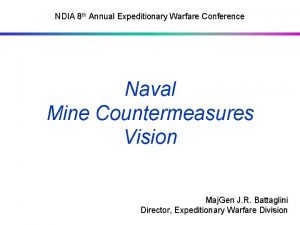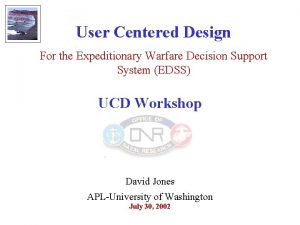Expeditionary Learning Grade 8 Module 1 Unit 2




















- Slides: 20

Expeditionary Learning Grade 8 Module 1 Unit 2 Case Study: WHY DO PEOPLE FLEE HOME?

Lesson #16 Planning the Introductory and Concluding Paragraphs of the End of Unit Assessment Essay

Learning Objective: O Students will plan the introductory and concluding paragraphs for the End of Unit Two Assessment by using graphic organizers. • CCLS: O I can analyze how specific dialogue or incidents in a plot propel the action, reveal aspects of a character, or provoke a decision. (RL. 8. 3) O I can write informative/explanatory texts that convey ideas and concepts using relevant information that is carefully selected and organized. (W. 8. 2) O I can produce clear and coherent writing that is appropriate to task, purpose, and audience. (W. 8. 4) O With support from peers and adults, I can use the writing process to ensure that purpose and audience have been addressed. (W. 8. 5)

Lesson Vocabulary introductory introduction concluding conclusion thesis cite

Warm Up: Sharing Homework O pair up O Spend few minutes to share with your partner the planning you did for Body Paragraphs 1 and 2 of your essay.

LEARNING TARGETS: O I can plan effective introductory and concluding paragraphs for my analytical essay. O I can cite where I found my evidence. Think-Pair-Share: *What is an introductory paragraph? *Where do you find the introduction in a piece of writing? *What does the introduction do? Think-Pair-Share: *What is a concluding paragraph? *Where do you find the conclusion in a piece of writing? *What does the conclusion do? Think-Pair-Share: *What does cite mean? *Why do you need to cite where you found evidence? *How do you cite evidence?

Forming an Evidence-Based Claim: “Who Is Ha before She Has to Flee Her Home? ” Turn to page 84 in your Workbook. Think-Pair-Share: *So what is the introduction about? What does it tell you? Why? For homework in Lessons 12 through 14, you began to locate the strongest evidence at the beginning of the novel to answer the question: Who is Ha before she is forced to flee Vietnam?

Forming Evidence-Based Claims O Turn to pg. 117 in your Workbook. O You used this same organizer in the previous lesson to make claims for Body Paragraphs 1 and 2. You will use the same process to form an evidence-based claim to answer the question: Who is Ha before she has to flee Vietnam? This will become part of the introductory paragraph of your essay. *Do not forget to cite your sources. Numbered Heads pair up-1 with 4 and 2 with 3 to work on making a claim to answer the question.

Paired Work O Turn to the Directions for Forming Evidence- Based Claims: Who is Ha before she is Forced to Flee Vietnam? Pg. 118 of your Workbooks. Follow the directions: O O O O Focus on the Who Is Ha? anchor chart and your structured notes. With your partner, discuss the strongest pieces of evidence that show who Ha is before she is forced to flee Vietnam. Record those details on your Forming Evidence-Based Claims graphic organizer. Include the author’s name and the page number where the detail can be found. Focus on the next row of the graphic organizer. With your partner, discuss how you think the details you have chosen connect. Record this on your Forming Evidence-Based Claims graphic organizer. With your partner, discuss a claim you can make using the connection between the details you have chosen. Record your claim on your Forming Evidence-Based Claims graphic organizer.

Questions While You Work 1. What are three strongest pieces of evidence that explain who Ha is before she flees her home? 2. Why did you choose those details? 3. Where did you find those details? 4. How are all of the details you have collected on your organizer connected? 5. Based on how your details are connected, what claim are you making about who Ha is before she has to flee her country? ”

Planning the Introductory Paragraph O Take out the novel Inside Out & Back Again. O Odd-numbered and even-numbered heads pair up. O Refer to the first row of the NYS Grade 6 -8 Expository Writing Evaluation Rubric (pg. 95). O “Clearly introduce a topic in a manner that follows from the task and purpose. ” O Think-Pair-Share: So now that you have read the introductory paragraph of the model and the row of the rubric about introductions, what do you think makes the introduction of an essay effective?

Effective Essays: Student Ideas List of Ideas 1. Outlines what the essay will be about—gives a clear purpose (Ms. G) 2. 3. 4 5 6 7 8

Planning Your Essay Graphic Organizer O Turn to pg. 119 in your Workbook. O You can use these questions to help you build your central claim or thesis in the Introductory Paragraph box: *What is the essay about? *What point will you, the author, be making? *What evidence will you be using? Why? The thesis statement tells the reader what the essay will be about, what point you will be making, and the evidence you will be using to support your claims.

O Think about the three claims you have made so far: *Who Ha is before she flees her home *How refugees turn “inside out” *How refugees turn “back again” as they flee and find home What point are you going to make in your essay with these claims? Discuss with your partner. Record your thinking on pg. 119. This is just a planning organizer, so you don’t need to write in full sentences, however your plans should be clear enough for you to follow to write your essay.

Introductory Paragraph-Part 2 this is just a planning O Look Remember, at the questions next toorganizer, Part 2 soofyou the don’t need to write in full sentences, but your plans Introductory Paragraph box on your Planning Your should be clear enough for you to follow to write your Essayessay. graphic organizer. Read along with me: to cite your sources! *Who is. Don’t Ha forget before she flees her home? *Why do we need to know this to understand how she turns “inside out and back again”? Use the following resources to finish planning your introductory paragraph on your Planning Your Essay graphic organizer: *The model essay *The criteria (listed on the board) *The Forming Evidence-Based Claims graphic organizer about “Who is Ha? ”

Planning the Concluding Paragraph O Turn to page 85 in your E. L. Workbook. This is the conclusion in the Model Essay. Read along silently as I read aloud to you. Think-Pair-Share: *What makes this conclusion effective? Answers should include the following: *Conclusion should tie everything together *Conclusion should restate thesis statement *Conclusion should review the main points that have been made *Conclusion should remind the reader of what you have outlined in your writing *The final sentence should be like a final thought.

Planning the Concluding Paragraph O Use the criteria listed on the board and the model essay to plan your essay’s concluding paragraph on the Planning Your Essay graphic organizer on page 123 of your E. L. Workbook. O Remember again that this is just a planning organizer, so you don’t need to write in full sentences. O Planning Questions: *What was your thesis statement? *What are the main points you made throughout the essay? *What is your final thought that you want to leave the reader with? Why?

If you finish early… O If you finish planning your concluding paragraph, please do the following: *Review and revise the Planning My Essay graphic organizer. *Reread the model to see what else you notice that might help you draft your essay in the next lesson.

Closing: Peer Critique of Plans for Introductory and Concluding Paragraphs O pair—to peer-critique your plans for the introductory and concluding paragraphs. O Directions for the peer critique: 1. 2. 3. 4. 5. 6. Decide who will go first. Partner A, take two minutes to talk Partner B through your plan for your essay. Partner B, tell Partner A one “star” (positive thing) about his or her plan. Partner B, ask Partner A one question that will help Partner A think more deeply about one aspect of his or her plan in order to improve it. Examples could include: *“So which evidence are you using in your essay to support your claims? ” *“Why are you using that evidence? ” *“What is your final thought? ” *“Why have you chosen that final thought? ” Partner A, write down one step you will take for homework to improve your plan. Trade roles and repeat.

Homework A. Complete, review, and revise your Planning My Essay graphic organizer in preparation for writing your essay in the next lesson. Make sure your plans are at the stage that you can use them as a basis for your writing.
 Grade 8 module 1
Grade 8 module 1 Expeditionary learning curriculum
Expeditionary learning curriculum Ndia expeditionary warfare conference
Ndia expeditionary warfare conference Expeditionary warfare conference
Expeditionary warfare conference Grade 6 module
Grade 6 module Grade 6 module 1: unit 2 answer key
Grade 6 module 1: unit 2 answer key What is sand made of
What is sand made of Cuadro comparativo entre e-learning b-learning y m-learning
Cuadro comparativo entre e-learning b-learning y m-learning C device module module 1
C device module module 1 Unit 10, unit 10 review tests, unit 10 general test
Unit 10, unit 10 review tests, unit 10 general test Unchanging values in a changing world meaning
Unchanging values in a changing world meaning Principles of marketing grade 11 module 2
Principles of marketing grade 11 module 2 Fixed assets accounting grade 12
Fixed assets accounting grade 12 Business mathematics module 3 answer key
Business mathematics module 3 answer key New era accounting grade 11 module 6
New era accounting grade 11 module 6 1:4 scale
1:4 scale Grade 6 module
Grade 6 module Accounting module grade 11
Accounting module grade 11 Module 1 grade 7
Module 1 grade 7 English module grade 10
English module grade 10 Grade 2 module 1
Grade 2 module 1
